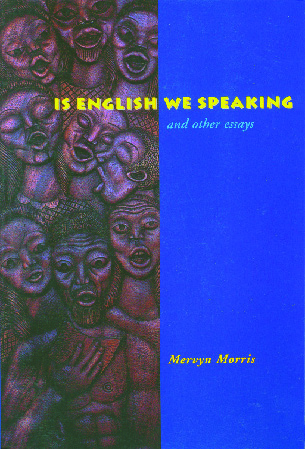MEMOIR
UWI: A Photographic Journey
Henry Fraser (ed.), Ken Richards, Owen Minott (Ian Randle Publishers 1998, ISBN 976 8123 58 3)
For those who can afford it, this handsome book should be a welcome souvenir for anyone who has spent time at the University of the West Indies (UWI). Published to mark the University’s 50th anniversary in 1998, it’s a strikingly lavish book for a souvenir — large hard-cover art-book format, over 200 pages, 350 photographs, many of them in colour. Ken Richards and Owen Minott are both distinguished UWI alumni, medical men with a penchant for photography; Henry Fraser, who contributed the brief text, is also a UWI product, now Professor of Medicine at the University’s Barbados campus. The photographs are the meat of the book — the text is confined to a historical overview and section introductions — and they provide a real flavour of University life from the earliest days to the present. Student life, staff, the three campuses, outreach centres and formal occasions are all well represented. (There’s a particularly nice shot of Jimmy Cliff receiving his honorary doctorate in cap and gown, with a big grin and deeply bloodshot eyes.) There’s not much sense of the University’s interaction with the wider community, or the fruits of half a century of intellectual toil — but a souvenir exists to stir memories, which these images will do.
FICTION
Considering Venus
D. Gisele Isaac (Seaburn Publishing 1998, ISBN 1 885778 42 2)
This short novel has been quite a hit in Antigua, it seems. The setting is early nineties New York, where a gay single woman from Antigua meets a straight African American widow; they’re both forty-something and in need, and they fall in love. Trouble is, the widow is still haunted by marital memories and personal scruples, not to mention three grown children. Gisele Isaac, who teaches literature at St John’s University in New York (there’s a back-cover photo of her apparently with a rose between her teeth), favours a simple, linear narrative, often clichéd, and her publisher has allowed a page layout of startling eccentricity, betraying the erotic promise of the cover. But the tale deals frankly with the obvious problems that this gay relationship slides into, both physical and emotional. In the end it’s not so much about gay love as about facing up to the consequences of choice, telling the truth, and paying the price. But not to worry. On the last page our heroines are heading off into the Antiguan sunset, hand in hand.
MUSIC
Ring Of Steel: Pan Sound And Symbol
Cy Grant (Macmillan Caribbean 1999, ISBN 0 333 66128 1)
The British publishers Macmillan scoured Trinidad for years, in vain, for someone willing and able to write a general introduction to the instrument invented there, the steel pan. They finally turned to the UK-based Guyanese barrister, entertainer and ex-RAF pilot Cy Grant: the result is a large-format book of 120 pages, much enhanced by Abigail Hadeed’s moody photographs and by generous quotes, not least from the author’s poems. Grant declares at the start that he’s interested in the mythology of pan: its deep African roots, its social function, its symbolism, its strange hypnotic sweetness. He sketches in the history and the basic facts about the instruments and their context, and usefully surveys pan’s penetration of other continents and cultures. But his real enthusiasm is the mythologising of pan — acoustical properties, healing powers, Greek legend, mysticism. Pan emerges as the instrument of the gods, far removed from its mundane tribulations on earth. The trouble is that the text is frequently inaccurate and repetitive, Grant’s accounts of the history and technology are too sketchy to be useful, his grasp of acoustics is limited, and the mythology is unconvincing. This is more of a private meditation on pan than an objective introduction to it.
LITERATURE
Is English We Speaking
Mervyn Morris (Ian Randle Publishers 1999, ISBN 976 8123 63 X)
“What wrong with it?” asks Galahad in Sam Selvon’s The Lonely Londoners when English Daisy can’t understand a word he says. “Is English we speaking.” This gives Mervyn Morris — the Jamaican poet and critic who is Professor of West Indian Literature at UWI’s Jamaican campus —his title, and leads him into several pieces about the gap between Caribbean spoken and written language. We delve into dub poetry, storytelling, Louise Bennett, Mikey Smith, Mutabaruka, Paul Keens-Douglas, Trevor Rhone’s plays. From there, Morris branches out into specific writers and books — Salkey, McKay, Reid, Roy, Walcott, Melville, Brathwaite, Rhys — before returning to Selvon and Moses Ascending. The 22 short essays here have mostly appeared before in journals and academic books: they do not go deep, but are often sharply focused and thought-provoking. A sentence by Selvon on spoken vs. formal language is used as one of this book’s epigraphs: “Sometimes the words freeze and you have to melt it to hear the talk.” Three hundred scholarly pages could not put it more cogently.






















